HAGS – Hardware-Accelerated GPU Scheduling: Ultimate Guide

Last updated on February 8, 2024
Table of Contents
Introduction
Hardware-Accelerated GPU Scheduling is a feature available in both Windows 10 and Windows 11 that can enhance gaming and video performance by allowing your PC’s GPU to manage its own video memory (VRAM) independently of the operating system. Let’s delve into the details and learn how to disable it if needed.
What Is Hardware-Accelerated GPU Scheduling (HAGS)?
Typically, your computer’s CPU offloads graphics-intensive tasks to the GPU for rendering. The CPU gathers frame data, assigns commands, and prioritizes them for the GPU to render. With Hardware-Accelerated GPU Scheduling, the GPU’s scheduling processor and VRAM take over this work, running it in batches to render frames. This offloads some work from the CPU, potentially reducing latency and improving overall PC performance.
Should You Enable HAGS?
If you have a supported graphics card (NVIDIA GTX 1000 series or later, or AMD 5600 series or later), enabling GPU scheduling can enhance performance during resource-intensive tasks like video editing and gaming. However, if you encounter issues after enabling it, such as app crashes or graphics-related problems, consider disabling it.
Hardware-Accelerated GPU Scheduling May Cause Some Games to Crash
Hardware-Accelerated GPU Scheduling (HAGS), while designed to enhance performance, can occasionally lead to game crashes under certain circumstances. Let’s explore why:
- Driver Compatibility: HAGS relies on proper communication between the GPU and the operating system. If your GPU drivers are outdated or incompatible, enabling HAGS might cause instability. Ensure you have the latest drivers from your GPU manufacturer.
- Game-Specific Issues: Some games may not handle HAGS well. Developers optimize their games based on traditional scheduling methods. When HAGS disrupts this expected behavior, it can result in crashes. Certain game engines or older titles may be more susceptible.
- Resource Allocation: HAGS allocates VRAM differently. If a game’s memory management assumes a specific pattern and HAGS changes it, conflicts may arise. Games with high VRAM demands or frequent texture swaps could encounter issues.
- Interaction with Other Software: HAGS interacts with various components, including DirectX, the GPU driver, and the game engine. If any of these components have bugs or conflicts, crashes may occur. Background applications (like overlays or recording software) can also interfere.
- Overclocking and Stability: Overclocked GPUs are more sensitive to changes. HAGS alters how the GPU operates, potentially affecting stability. If your GPU is already pushing its limits, enabling HAGS might tip it over the edge.
- System Variability: Every PC setup is unique. Factors like motherboard compatibility, BIOS versions, and other hardware components play a role. Some systems handle HAGS flawlessly, while others experience issues.
- Windows Updates: Microsoft continually refines HAGS through Windows updates. An update might introduce improvements or address existing problems. Keeping your OS up to date is crucial.
Recommendations
- Test It: Experiment with HAGS enabled and disabled. Monitor game stability and performance. If crashes occur, consider disabling it.
- Update Everything: Ensure your GPU drivers, Windows, and game patches are up to date.
- Roll Back: If crashes persist, revert to the previous setting.
- Community Insights: Check online forums and communities. Others might share their experiences and solutions.
Remember that HAGS isn’t universally problematic; many users benefit from it. However, if you encounter issues, weigh the pros and cons based on your specific setup and gaming habits. 🎮🔧
Enable/Disable HAGS
Method 1: Using Windows Settings (Windows 10 and 11)
Windows 10
- Open Settings > System > Display > Graphics Settings. Toggle on “Hardware-Accelerated GPU Scheduling.”
Windows 11
- Navigate to Settings > System > Display > Graphics > Change Default Graphics Settings. Enable or disable “Hardware-Accelerated GPU Scheduling.
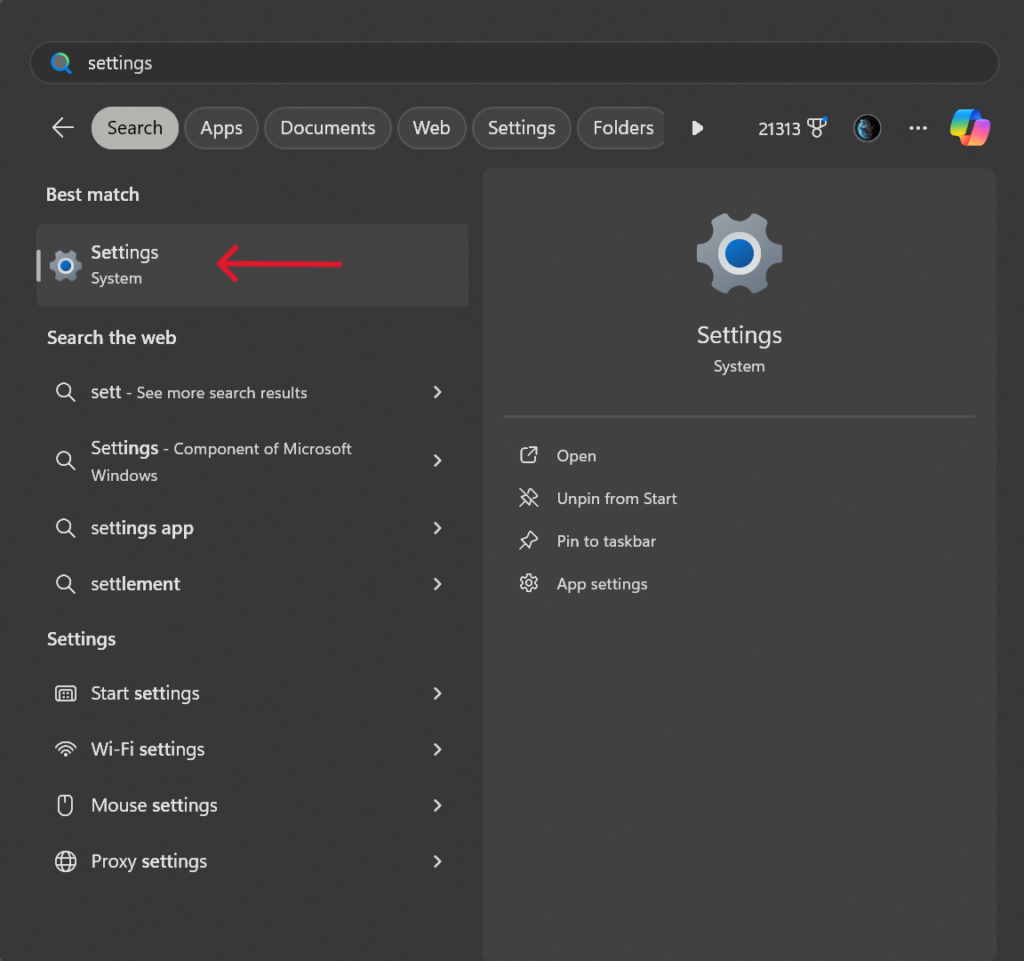

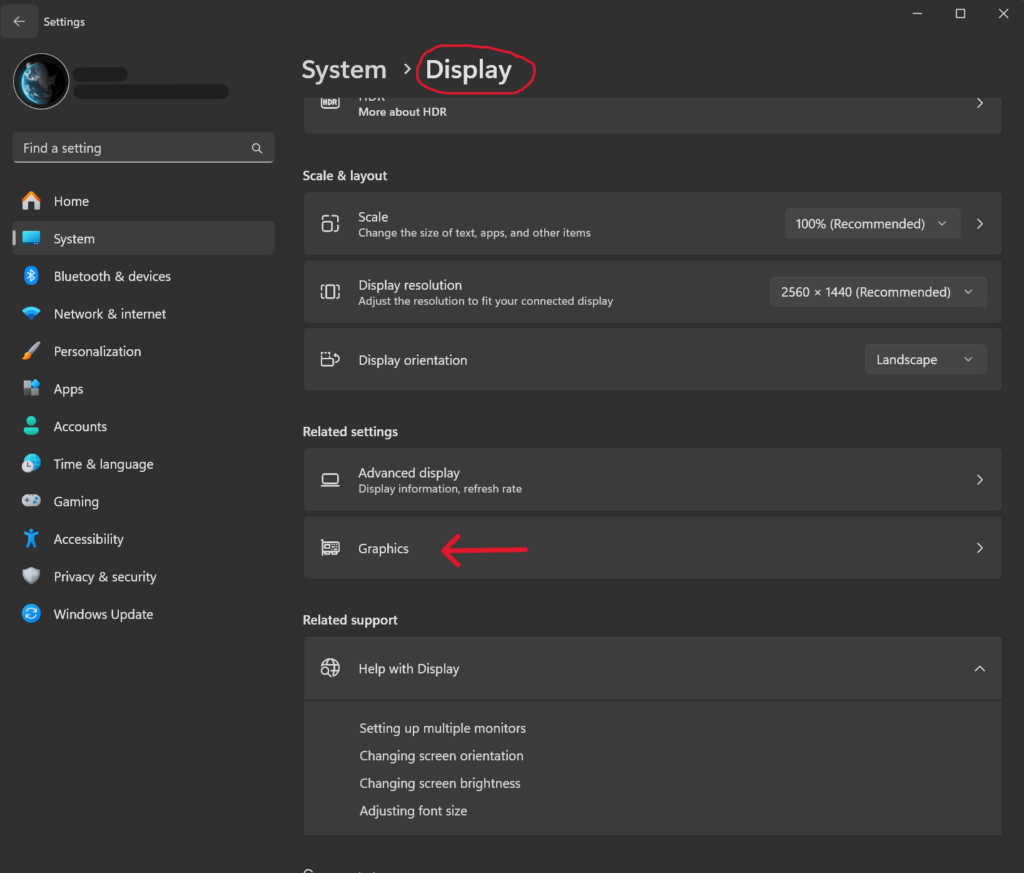
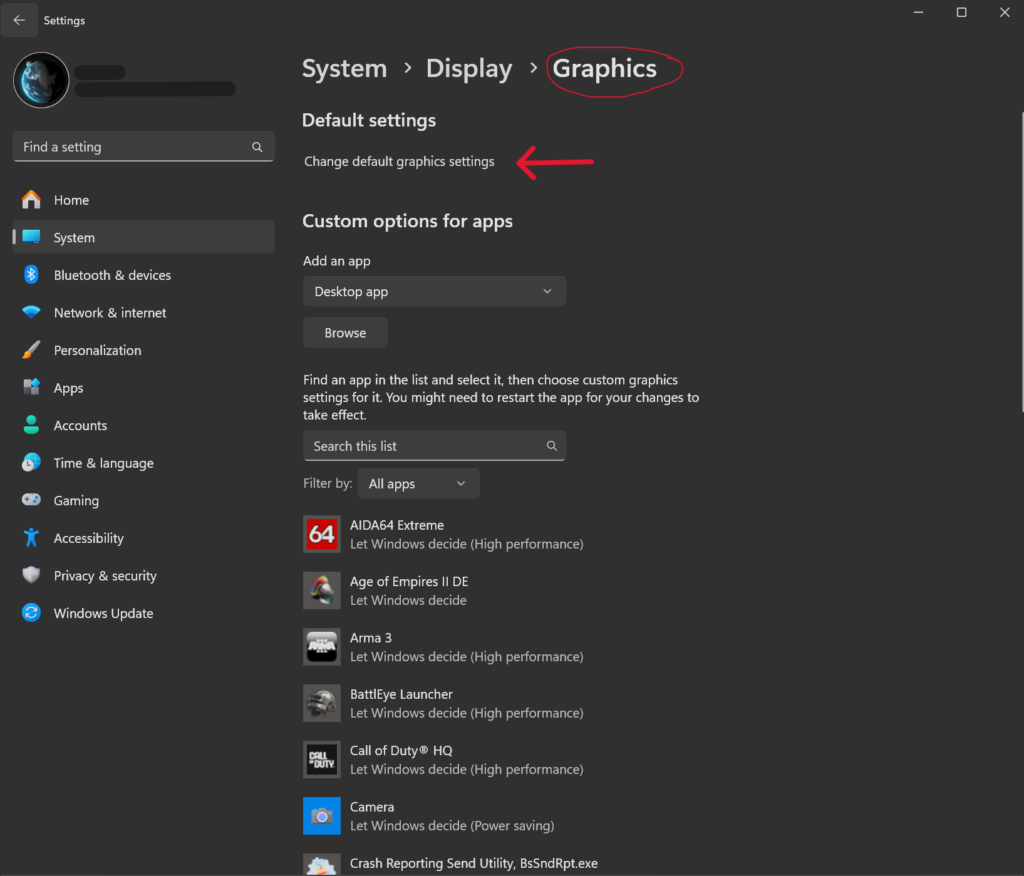

Method 2: Using Registry Editor (Windows 10 and 11)
Windows 10/11
- Press Windows key + R to open the Run dialog.
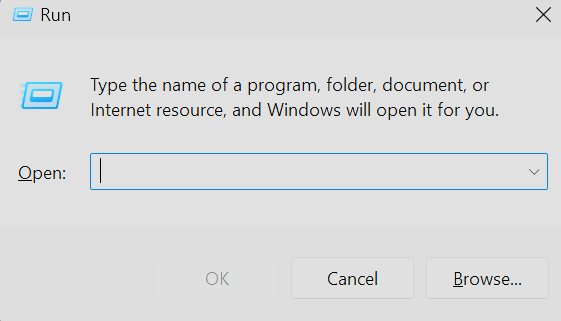
- Type regedit and press Ctrl + Shift + Enter to open an elevated Registry Editor.
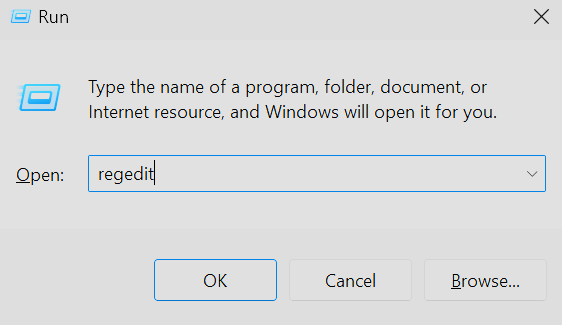
- Navigate to the relevant key or paste the following into the path box and press ENTER.
Computer\HKEY_LOCAL_MACHINE\SYSTEM\CurrentControlSet\Control\GraphicsDrivers


- In the pane on the right, double-click the option that says “HwSchMode.”
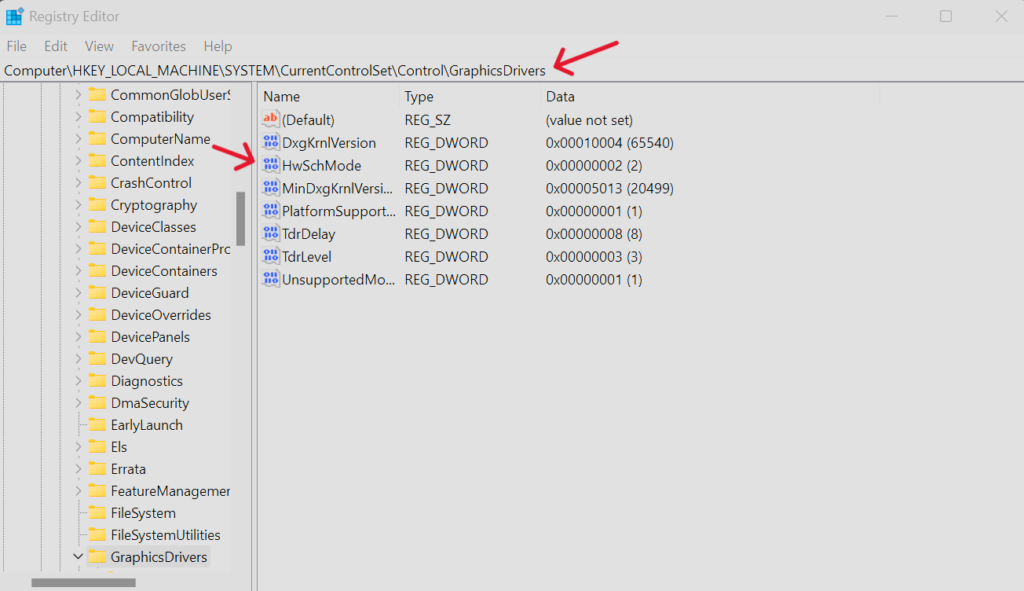
- On the entry edit box, select the “Value Data” field and enter
2(ENABLE) or, 1 to (DISABLE). In the “Base” section, choose “Hexadecimal.” Then, select “OK.”.
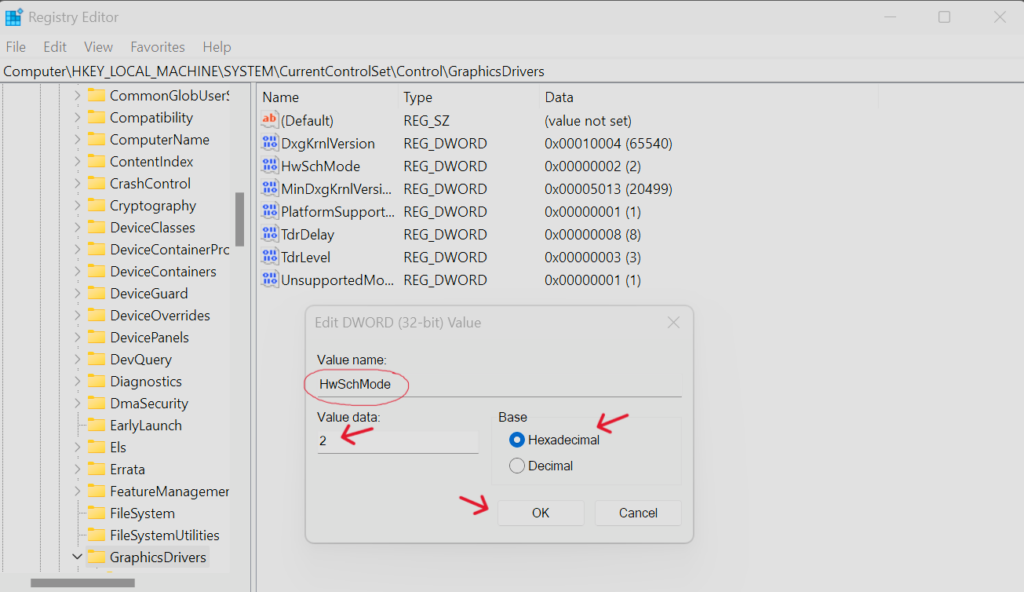
Restart your computer for the changes to take effect. 🚀🎮
Hardware-Accelerated GPU Scheduling Benchmarking
While HAGS does have an overall positive effect for gaming it isn’t groundbreaking. So, if you have to disable it for any reason or your hardware doesn’t support it, there is no need to have FOMO. HAGS also had very little impact on content creation performance. Below is a summary of 4 benchmarks done by gamersnexus.net, babletechreviews.com and pugetsystems.com. If you want to dive deeper into this topic, I have provided the links below.
- GamersNexus Benchmarks (Windows 10):
- GamersNexus conducted performance testing for HAGS on Windows 10 version 2004. Both NVIDIA (Pascal and Turing cards) and AMD (5600 and 5700 series) GPUs support HAGS.
- Enabling HAGS offloads work from the CPU’s high-priority thread to a dedicated GPU-based scheduling processor. This change aims to reduce input latency while maintaining overall performance.
- Results varied across games, but HAGS generally showed promise in slightly enhancing performance.
- BabelTechReviews Benchmarks (Windows 10):
- BabelTechReviews analyzed HAGS performance using an AORUS RTX 3080 MASTER.
- They tested 13 games and 4 hybrid benchmarks, comparing performance with HAGS enabled and disabled.
- The impact varied by game, but overall, HAGS showed potential benefits for gaming performance.
- CPU Rendering Benchmarks:
- In CPU rendering tests, HAGS had little impact on content creation performance.
- Applications like Photoshop, Premiere Pro, DaVinci Resolve, Unreal Engine, and OctaneBench showed results within the margin of error.
- BabelTechReviews Revisited (Windows 10):
- BabelTechReviews revisited HAGS performance across DirectX 11 and DirectX 12 games.
- The impact varied by game, and they tested both built-in benchmarks and custom sequences.
- If you’re curious about specific games, their article provides detailed charts.
Remember that HAGS results can vary based on your specific hardware and drivers. It’s always a good idea to test it on your system and observe any changes. 🚀🎮
To receive the latest Windows tips and tricks enter your email below.
READ MORE: SOLVED: Palworld Crashing UE-Pal Error, Best Palworld Patch Notes (Updated) Steam and Xbox Game Pass, Amazing ASUS ROG Swift OLED PG32UCDM: Overview, Release Date & Price






Responses